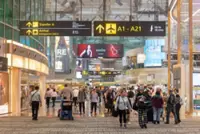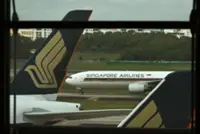Changi Airport’s fifth terminal will be as big as Terminals 1 to 4 combined. - CHANGI AIRPORT GROUP
SINGAPORE: In June 1975, a major national project got under way to reclaim land for a new international airport in Changi. It was a bold move that would eventually cement Singapore’s position as a key aviation hub.
Some 50 years later, the airport has marked yet another significant milestone – one that is no less bold or ambitious. On May 14, Prime Minister Lawrence Wong broke ground on Changi Airport’s fifth terminal, which will be as big as Terminals 1 to 4 combined.





